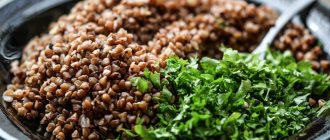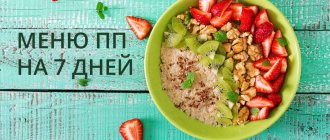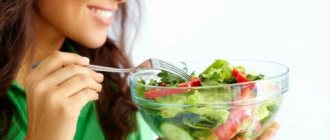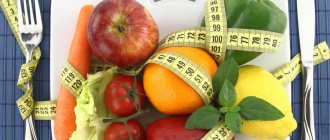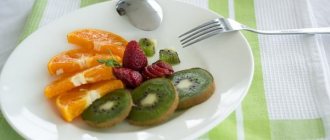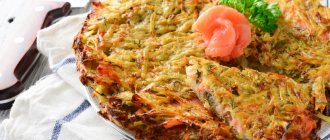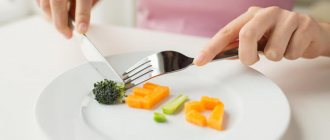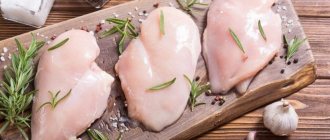Initially, this diet was invented specifically for people suffering from diseases such as celiac disease or gluten intolerance. But gradually, gluten-free products began to gain more and more space and have now practically become a trend in modern dietetics. According to reviews from people who have tried all the intricacies of a gluten-free diet, it can not only improve health, but is also quite effective for losing weight. This diet is so popular that it has also affected many celebrities. Stars such as Zooey Deschanel, Cate Blanchett, Miranda Kerr, Lady Gaga and Jessica Alba could not resist the newfangled trend. And the popular Gwyneth Paltrow and the famous Victoria Beckham abandoned gluten-containing products in order to support their children, for whom they are contraindicated for medical reasons.
What is gluten
Content:
- What is gluten
- What is dangerous and why is gluten needed?
- The essence of a gluten-free diet
- Who is a gluten-free diet suitable for?
- What can you eat
- Prohibited Products
- Gluten-free diet for weight loss
- Pros and cons of a gluten-free diet
- Gluten-free diet reviews
- conclusions
Gluten, or otherwise gluten, is a special type of protein found in the seeds of cereal crops. Most of it is found in wheat, barley and rye. It is thanks to him that the dough made from the flour of these cereals turns out so elastic, soft and plastic. After all, without gluten it would not have such stickiness. Because the main property of this product is to glue substances into a homogeneous mass.
Delicious recipes
The menu for gluten-free nutrition, as a rule, consists of meat, vegetable and fermented milk dishes. To expand your diet, you can try recipes for gluten-free dishes and baked goods using a variety of gluten-free flours.
Chicken breast meatballs with mashed potatoes
To prepare, you need 1-2 chicken breasts, salt, black pepper, oil for frying, 0.5 kg of potatoes, 50 grams of sour cream for dressing.
The potatoes are peeled, filled with water, salted and cooked until tender. At this time, the breast should be washed, cut into thin slices across the grain, each piece beaten on both sides, salt and pepper.
Drain the water from the pan with the finished potatoes, add sour cream and make puree using a blender. Place the finished puree on plates, sprinkle with dill and begin preparing the chops.
The chops are cooked in a hot frying pan with butter, frying the meat on both sides for 2-4 minutes.
It is important not to dry out the meat, as the chops will become dry and tough.
Immediately after cooking, chicken meatballs are placed on the side dish and served.
Rice flour sponge cake in a slow cooker
To prepare the sponge cake you will need 6 eggs, 180 grams of sugar, 150 grams of rice flour, vanillin, lemon zest, butter or vegetable oil for greasing.
First of all, you need to separate the whites from the yolks and intensively beat the yolks with sugar and vanillin for 4-5 minutes until the sugar dissolves and the mixture doubles in volume. Next, in a separate bowl, beat the whites for 8-10 minutes into a dense foam. After this, add lemon zest and rice flour to the yolks and mix thoroughly with a spoon. Gradually add whites into the dough until the mixture becomes homogeneous.
Grease the multicooker bowl with oil, pour out the dough and set it to baking for 40-50 minutes, depending on the multicooker model. The readiness of the biscuit is checked with a match.
Gluten-free cornmeal muffins
To make muffins, you need 170 grams of corn flour, 90 grams of cornstarch, three eggs, 100 ml of milk, 100 grams of butter, 150 grams of sugar, a tablespoon of baking powder and vanilla.
First you need to mix the dry ingredients: flour, starch, baking powder. Next, in a separate bowl, you need to beat the eggs, sugar and vanillin until the sugar dissolves and foam appears, add softened butter, warm milk and beat again. Next, mix all the ingredients until smooth and pour into molds.
Bake the muffins in a preheated oven at 180 degrees for 20 minutes.
For a gluten-free diet to be effective, you must completely eliminate prohibited foods and adhere to the principles of dietary nutrition throughout your life.
What is dangerous and why is gluten needed?
At its core, the gluten-free diet was specifically created for people suffering from celiac disease, an autoimmune disease caused by damage to the small intestine from foods that contain gluten. Moreover, if previously such a disease was quite rare, in the modern world the number of people genetically predisposed to this disease has increased significantly. For such people, gluten-free therapy is simply vital, because as soon as you give up foods, you can improve forever, and sometimes even save your life.
Quite often, those who are allergic to gluten or suffer from gluten intolerance follow a gluten-free diet. This can be detected through laboratory tests, as well as by observing the body’s reaction. For example, when eating bread, such a person may experience flatulence or discomfort in the abdominal area. Also, often symptoms of gluten intolerance are anemia, rapid weight loss and frequent bowel movements.
However, gluten is a natural protein that gives baked goods their characteristic fluffiness and flavor. In the absence of it, synthetic dyes and preservatives are often added to baked goods to improve its taste. Accordingly, the less gluten a product contains, the worse its quality and the much lower content of nutrients. One thing that can be said in its favor is that previously this protein was practically invisible. Nobody paid attention to him, except for the two percent of people who suffered from celiac disease. For the remaining 98%, it was completely harmless and did not pose any danger. However, now more and more people are abandoning it, as it is considered a fashion trend and promotes a healthy lifestyle, which is also in trend now.
Best Gluten Replacement Products
While gluten improves the taste and appearance of foods, gluten-free foods are also varied and delicious. Modern stores have special departments where similar products are sold.
So, a list of the best fiber substitutes that you can use to diversify your diet:
- ancient seeds
are a competitive product for wheat, matching it in nutritional value and taste; - root vegetables
- do not irritate the walls of the digestive organs, normalize the water balance in the human body, improve the absorption of food; - leafy vegetables
- contain a large amount of vitamins, are safe for the figure, strengthen the immune system, prevent the development of inflammatory processes on the intestinal walls; - pumpkin, sunflower, flax seeds
- enriched with magnesium, calcium and other useful microelements, contain fats, vitamins, fiber; - berries, vegetables and fruits
are a source of vitamins and are included in the diet when following weight loss diets; - legumes
– contain protein, magnesium and other useful components, prevent vitamin deficiency, but are characterized by long-term digestibility; - brown, wild and black rice
is one of the main sources of nutrients, has a calming effect on the walls of the digestive organs, and is well absorbed.
If you regularly eat foods from the list above, you don’t have to worry about a lack of nutrients in your body.
The essence of a gluten-free diet
The essence of this diet is to completely eliminate from the diet all foods that contain gluten. This approach will help improve the functioning of the digestive system and normalize metabolic processes in the body. Which will undoubtedly be practically the first step towards healing the body and will be very effective for losing weight.
A complete transition to gluten-free products will lead to a deep cleansing of the intestines and the removal of dangerous and harmful toxins that have accumulated in the body by this time.
A gluten-free diet offers enough variety in your diet so that those who choose to follow this lifestyle will not experience the negative feelings that often accompany weight loss, such as hunger or exhaustion.
General rules
In childhood, intolerance to gluten - a vegetable protein contained in cereals (for example, in wheat its content reaches 80%). This condition is associated with a deficiency in the small intestinal mucosa of an enzyme that completes the hydrolysis of this protein. Products of incomplete decomposition have a toxic effect on the mucous membrane, causing damage and digestive disorders. Fortunately, for many children, gluten intolerance goes away as they age.
Gluten intolerance is also associated with the disease celiac , which is hereditary, rare, but in this case the intolerance to plant proteins remains for life. Decay products damage the villi of the small intestine and these patients experience serious digestive disorders, the digestion and absorption of fats, proteins, and carbohydrates is affected. In all cases of gluten intolerance, the most effective measure is to prescribe a special diet.
What is a gluten-free diet? This is a diet with a complete exclusion of foods containing this plant protein. A special version of therapeutic Diet No. 4 - Diet No. 4AG for patients with celiac enteropathy. A gluten-free diet excludes the consumption of products made from wheat, barley, rye and oats. This means not only cereals, but also flour from these cereals, bread and any baked goods. Flour should not be present even in small quantities - in the breading of fish or cutlets. This vegetable protein is absent in rice, corn, soybeans, and potatoes, so such products are allowed.
A gluten-free diet should contain an increased amount of protein, normal fat, and be enriched with minerals (in particular calcium) and vitamins . In this regard, the amount of protein is 120 g per day, and fat is 100 g. The amount of fat at first in case of severe digestive disorders is limited and preference is given to butter and vegetable oils, as they are easily digestible. The amount of carbohydrates in the diet is not limited, and they amount to 400-450 g. Almost fruits, vegetables, meat, fish, eggs, cottage cheese, and lactic acid products are allowed. Dishes should be boiled or steamed. Salt is limited to 8 g.
Very often, a child cannot tolerate not only gluten, but also the milk protein casein , which is revealed by a serological blood test. In such cases, a casein-free and gluten-free diet is prescribed, which has more significant restrictions.
Casein is the main protein in cow's milk (it contains up to 80%). Infants suffer from intolerance to it, and this is manifested by frequent regurgitation, various rashes and skin irritation, loose stools, abdominal colic and bloating. The child behaves restlessly, does not gain weight and begins to lag in growth. Urticaria and swelling may occur , which manifests as difficulty breathing.
After the examination, the baby is prescribed special infant formulas without casein and gluten. Casein intolerance often disappears by age two, but sometimes persists into adulthood. In this case, all dairy products, including butter, are excluded. Some experts believe that milk and dairy products are harmful to people of any age. Because casein is not digestible even in a healthy person due to a lack of enzymes.
More often, the prescription of the BGBK diet is heard when discussing the treatment of autism . Among the causes of this mental disorder, there have been suggestions of possible intolerance to gluten and casein, which are not broken down into amino acids . Casein products that are not completely broken down enter the bloodstream, causing the effects of opiates.
Many experts believe that any child with autism should follow this diet at least occasionally, even if there is no obvious improvement. If improvements are evident, then it must be followed for a long time. Moreover, the sooner the child begins to eat according to this system, the better the results.
The diet excludes obvious foods that contain these proteins:
- rye, oats, barley, wheat;
- all dairy products, including condensed milk and hard cheeses;
- wheat, rye, oat flour;
- bakery products made from these types of flour;
- confectionery products (pastry, cakes, cookies);
- all pasta;
- semolina, oatmeal, wheat, pearl barley, barley, multi-grain porridge;
- semi-finished products with dough (dumplings, pasties, ravioli);
- breaded products (cutlets, nuggets, meatballs).
Non-obvious products (the recipe contains milk powder and gluten-containing cereals, but this may not be indicated on the packaging):
- canned meat and fish;
- semi-finished soups, cubes for preparing broth;
- sausages and sausages;
- sauces, ketchups, mayonnaise;
- cocoa powder, kvass, instant coffee, instant drinks (including Nesquik);
- candies, ice cream and chocolate;
- coated tablets (contain gluten), syrups contain malt (Novo-Passit and others).
On a gluten-free and casein-free diet, the following is allowed:
- buckwheat, corn and rice cereals;
- soups without prohibited cereals and borscht without the use of ready-made borscht dressings;
- meat, fish, poultry, eggs;
- vegetables, fruits, nuts, dried fruits;
- vegetable oil;
- home-ground rice, corn and buckwheat flour (using a coffee grinder) - in this case you can be sure of the purity of the product;
- homemade juices;
- starch (potato and corn) for breading and making jelly and jelly;
- honey
The minimum period for avoiding casein and gluten is four months, but longer is better. Then they begin to gradually introduce fermented milk products, monitoring the state of the gastrointestinal tract, skin and the child’s behavior (nervousness, sleep, lethargy, hyperactivity). Ideally, the whole family should adhere to such a diet, and prohibited foods should not be in the house. Any violation in the diet returns the child’s condition back.
Who is a gluten-free diet suitable for?
First of all, a gluten-free diet is necessary for people suffering from a digestive tract disease such as celiac disease. There is also an allergy to gluten, or gluten intolerance. With this condition, people experience frequent migraines, bowel dysfunction, flatulence, cramps and bloating. Introducing gluten-free products into your lifestyle and daily menu will significantly improve your condition and relieve adverse symptoms.
Eating them without medical indications, for the purpose of losing weight, will not bring tangible benefits to the body, moreover, it can significantly hit your pocket, since according to statistics, such products cost 2 times more than those containing this protein.
It is now quite common to believe that a gluten-free diet is very effective for autism, schizophrenia and other neurological diseases. But there is no reliable evidence of this fact yet.
The importance of diets. A little research
Gluten or gluten is a protein that has the ability to stick together. The largest amount of the element can be found in wheat, also in pasta, meat products and dairy products. You can see a more complete list.
Gluten is also added as a preservative to various products to increase the shelf life of products. In addition, the US Food and Drug Administration (FDA) allows small amounts of gluten in gluten-free products.
Often, even in childhood, many children experience intolerance to the substance. This is explained by the fact that the child’s body does not have enough enzyme that hydrolyzes the protein completely (breaks down the molecules of the substance into amino acids). With age, the disease can go away or develop into an allergy to gluten and a more serious disease - celiac disease.
People who experience problems after taking gluten must know gluten-free foods to protect their health. And for some, a gluten-free diet is the only chance to live a full life.
Dozens of studies have not answered the question of how much of a substance consumed can be safe for human health. Some experts suggest that 620 mg per day (about one-fifth of a piece of bread) is quite acceptable, while other scientists argue that even 10 mg of gluten per day can have serious consequences.
This is due to the fact that in people with celiac disease, every time they eat foods with gluten, the amount of gluten in the body accumulates, which leads to a worsening of the patient's condition. As a result, intestinal villi develop atrophy.
Scientists at the University of Maryland found that in patients whose diet included 50 mg of gluten daily, villous atrophy was observed as early as 90 days. 10 mg of gluten showed the lowest percentage of disease development.
advertising is not displayed
Thus, according to preliminary data from experts from the USA, we can conclude that the maximum amount of protein intake for patients with celiac disease and for people with gluten allergies is 10 mg per day. However, this indicator is individual for each person.
It is important for patients to know which gluten-free foods they can eat. In addition, they should consult a doctor so that he can prescribe the correct diet based on test data
What can you eat
Gluten-free products are quite common and familiar to everyone. These include:
- fresh nuts;
- unprocessed beans;
- raw seeds;
- vegetables and fruits;
- meat, poultry, fish and seafood;
- natural dairy products, butter, margarine;
- distilled alcoholic beverages;
- natural spices.
You can also eat cereals. The main thing is to make sure that such products are not mixed with gluten or have not been prepared with gluten. These can be various dyes, preservatives, and all kinds of food additives. Cereals allowed on a gluten-free diet include:
- buckwheat;
- corn;
- amaranth;
- linen;
- millet;
- rice;
- quinoa;
- arrowroot;
- soy;
- teff;
- tapioca;
- sorghum;
- rice, corn, soy, bean flour.
Instant Diet Recipes
Curd and millet casserole
Boil 80 g of millet for fifteen minutes, cool. Mix half a kilo of cottage cheese well with a fork. Beat two eggs and 4 tablespoons of sugar, add to the cottage cheese and mix well. Then mix with millet and a quarter teaspoon of soda. Transfer to a tin and bake for thirty minutes.
Chicken in batter
Wings or legs in a batter of rice flour, mustard, homemade yogurt and lemon juice are fried in a frying pan with olive oil. As a dietary option, pour chicken fillet with a sauce of honey, butter, mustard with the addition of curry and bake in the oven.
Prohibited Products
Wheat, rye, oats and all their derivatives are strictly prohibited on a gluten-free diet. The following products should not be consumed:
- wheat, including wheat flour;
- wheat cereals;
- semolina, artek, poltavka, bulgur, couscous, spelled;
- wheat starch, various additives including wheat protein, wheat-based thickeners;
- rye and all types of rye flour;
- kvass and beer;
- barley, including barley flour;
- barley cereals – pearl barley, barley;
- barley malt;
- products containing malt sugar - molasses, extract, vinegar, various flavorings;
- oats, including oat flour, flakes and grits;
- pasta;
- bakery products;
- whole grains;
- ice cream and yoghurts with a long shelf life;
- various canned foods: meat, fish, fruit, vegetables;
- crab sticks;
- sausages, sausages, smoked meats;
- semi-finished products;
- store-bought seasonings and spices;
- flavored tea bags;
- freeze-dried coffee;
- confectionery sweets;
- almost all ready-made sauces: mayonnaise, ketchup, mustard, and so on;
- bouillon cubes;
- soy sauce.
This list of products is not definitive. To be sure that a particular food contains gluten, you need to carefully study the composition presented on the product packaging. It is important to remember that the most important sources are wheat, barley, rye and all products containing them.
Homemade Gluten Free Baking Recipes
Gluten free quick pancakes
Finally, we’ll tell you how to make thin homemade flatbreads or pancakes using starch. Based on them, you can prepare “nalistniki” - rolls or envelopes with any filling. Most often they are made with cottage cheese, potatoes with mushrooms, bean paste, toffee, and also served with jam or sour cream.
List of ingredients:
- starch – 5 tbsp;
- milk – 500 ml;
- eggs – 4 pcs.;
- salt and sugar - to taste;
- vegetable or butter for processing the pan and impregnation.
It is necessary to shake the eggs and gradually add the sifted starch, making sure that no lumps form. Salt the dough and add warm milk little by little, stirring the dough.
At the last stage, you can add sugar and vanilla to taste. Sometimes added to salty pancakes
- tomato paste,
- onion and garlic powder,
- chopped fresh herbs (such as dill or basil) or
- dried herbs.
Good to know: you can use half-and-half flour with starch.
Vegan flatbreads
To make vegan flatbreads you need:
- water – 1 tbsp.;
- rice, almond or soy milk - 1 tbsp.;
- starch - to the desired consistency (from 4-5 tbsp);
- salt, sugar - to taste;
- soda - a quarter tsp. (optional, but needed for pancakes);
- vegetable oil - according to consumption for greasing the frying pan and finished pancakes.
Starch is diluted in milk, salt and sugar are added, and the dough is diluted with water until a very liquid consistency is formed. Pancakes are tenacious thanks to starch and do not tear.
The sheets are cooked in a wide, well-greased frying pan. The pancake quickly sets and dries, after which it needs to be masterfully flipped over. The finished sheets are greased with oil.
If you are wrapping a complex filling, I place the envelopes or rolls in a bowl and simmer for another 20-25 minutes in the oven under cream or tomato sauce.
This is useful: if you thicken such a dough. It will make fluffy pancakes, dumplings or dumplings.
Gluten-free diet for weight loss
Recently, more and more often this diet is moving from the category of medicinal to the category of “weight loss”. It is believed that by giving up foods containing gluten, you can lose a few kilograms, but this is not entirely true. In fact, gluten-free products often turn out to be much higher in calories than those in which this protein is present. Of course, if you stop eating baked goods, buns, and sweet flour products, you can undoubtedly lose weight, but in addition to this, you should also adhere to some immutable rules:
- do not drink alcohol;
- do not eat oil or fat-containing foods;
- give up sugar and “simple” carbohydrates.
But such nutritional principles accompany any diet, not just gluten-free. Essentially, losing weight is directly related to eating a balanced diet, whether gluten-containing or gluten-free.
But we cannot hide the fact that now many experts who support healthy eating are advocating the abandonment of this protein. They believe that eating gluten-free foods will help you get rid of digestive problems forever and will be a wonderful prevention of intestinal permeability. At the same time, normal and stable functioning of the digestive system improves well-being, speeds up metabolism, which undoubtedly leads to weight loss.
According to reviews from those who have used this diet specifically for weight loss, it allows you to lose up to three kilograms in a week. But you should adhere to a proper diet and count calories. To achieve better results, its duration should be at least eight weeks.
If you decide to follow a gluten-free diet, then before you start, you should definitely consult with a nutritionist. In order to build a nutrition plan that suits you and create a menu that suits your lifestyle.
Weekly meal plan
Like any other diet, gluten-free takes some getting used to. The main thing is to tune in to a positive mood, and then the transition process will go unnoticed and painlessly. And the final result will be a good mood, stable functioning of the digestive system, as well as normalization and possible weight loss. To adhere to such a diet without significant discomfort, you can use the recommended sample menu for a week.
Monday
Breakfast:
- boiled fish;
- mashed potatoes;
- black or green tea.
Dinner:
- meatball soup;
- steam cutlets;
- rice porrige;
- seaweed salad.
Afternoon snack:
- rice cakes;
- fruit salad.
Dinner:
- side dish of vegetables;
- buckwheat pudding.
Tuesday
Breakfast:
- boiled meat;
- buckwheat porridge;
- black or green tea.
Dinner:
- vegetable salad;
- vegetable soup;
- fruit jelly or juice.
Afternoon snack:
- baked apples;
- nuts.
Dinner:
- boiled meat;
- rice;
- rosehip decoction.
Wednesday
Breakfast:
- cornflakes;
- low-fat cottage cheese;
- black or green tea.
Dinner:
- fish or seafood soup;
- buckwheat porridge;
- baked chicken fillet;
- black or green tea.
Afternoon snack:
- rice cakes;
- fruit jam;
- black or green tea.
Dinner:
- vegetable stew;
- gluten-free bread;
- low-fat kefir.
Thursday
Breakfast:
- Omelet with cheese;
- black or green tea.
Dinner:
- meatball soup;
- apple and celery salad;
- fruit juice.
Afternoon snack:
- fruit jelly;
- compote.
Dinner:
- side dish of vegetables;
- buckwheat pudding;
- green tea.
Friday
Breakfast:
- baked apples;
- low-fat cottage cheese;
- black or green tea.
Dinner:
- steam cutlets;
- béchamel sauce;
- chicken bouillon.
Afternoon snack:
- assorted fruits;
- green tea.
Dinner:
- mashed potatoes;
- steamed fish cakes;
- fruit juice.
Saturday
Breakfast:
- boiled fish;
- rice porrige;
- coffee with milk.
Dinner:
- low-fat chicken broth;
- side dish of vegetables;
- green or black tea.
Afternoon snack:
- gingerbread with nuts and apples;
- fruit juice.
Dinner:
- boiled meat;
- buckwheat porridge;
- kefir.
Sunday
Breakfast:
- low-fat cottage cheese;
- fruit platter;
- black or green tea.
Dinner:
- meatball soup;
- pilaf with lean meats;
- vegetable salad;
- fruit juice.
Afternoon snack:
- fruit juice or jelly;
- nuts.
Dinner:
- side dish of vegetables;
- buckwheat pudding;
- black or green tea.
Proper nutrition means eating at least four times a day. You can use rice cakes, kefir, fermented baked milk, and fruits as snacks. Also relevant for weight loss is the ban on eating after six in the evening. By following this menu, you can lose about 3 kg in a week.
For children
The harm of gluten in baby food is associated with the occurrence of food allergies to it. It can cause damage to the lining of the small intestine, which leads to decreased absorption. Its gliadin fraction is toxic to the intestinal epithelium. As is known, wheat contains the largest amount of gliadin . Therefore, only human milk is recommended for children under 3-4 months of age, and to reduce the risk of allergies, complementary feeding begins with fruit and vegetable purees, and cereals with gluten-free cereals (buckwheat, corn and rice).
Semolina and oatmeal porridges are potential allergens, and they should be introduced into the diet as late as possible and last (no earlier than 6-8 months). At this age, the introduction of gluten-containing foods no longer causes changes. Corn flour is less likely than others to cause reactions, and rice flour, among other things, contains the largest amount of vitamins . It is made from unbroken rice, so porridge made from rice flour does not slow down peristalsis and does not cause constipation.
For a child with an identified food allergy, the best option would be therapeutic gluten-free milk formulas and cereals (gluten-free and dairy-free). These are monocomponent porridges that do not contain soy, vegetable and fruit additives. Currently, there are Babyki biscuits made from corn flour and many other products on the market.
A separate category are children with a hereditary predisposition to celiac disease (celiac enteropathy), which occurs in 1% of cases. It appears at an early age, 2 months after the introduction of cereal products. Typical symptoms are vomiting, abdominal pain, diarrhea , foul-smelling stools, flatulence and impaired weight gain, hypoproteinemic edema . Diagnosis of GE is easy (serological testing) and timely administration of a diet quickly relieves symptoms and normalizes the physical and mental development of the baby. Children are subject to lifelong medical supervision and must strictly adhere to this diet - gluten should not be present in their diet, even in trace quantities.
Food must be age appropriate and must be pureed first. Culinary processing - stewing and boiling, after which the products are passed through a meat grinder or sieve. Fruits and vegetables should be peeled and grated, but at first they should be limited due to the coarse fiber content, which slows down the recovery of the intestines.
The main sources of protein should be meat, fish, eggs, and homemade dairy products. The child gets fats from vegetable oils. Sources of carbohydrates: corn, rice, buckwheat (limited), rice, potato and corn starch, fruits, vegetables, jam, honey, sugar. The child can drink without restrictions. The restriction applies to industrially produced milk, to which flour may be added. Homemade milk and dairy products are allowed without restrictions.
For many years, the role of food intolerance in neuropsychiatric pathology ( epilepsy , attention deficit disorder, including autism ) has been discussed. And many experts recommend a gluten-free diet for an autistic child.
More than 60 years ago, Glenn Doman founded the Institute for Achieving Human Potential (USA), was its director, and with his staff began to develop methods of treating children with brain damage. Institute employees claim that proper nutrition is a large part of the program for restoring the physical and mental condition of a child not only with autism , but also with cerebral palsy , Down syndrome , epilepsy , and developmental delay. Thanks to diet, treatment can be much more effective and children achieve better results.
The Doman diet is based on the exclusion of gluten and dairy products. Milk contains casein, which acts on the opiate receptors in the brain and produces an effect similar to that of opiates. The principles of a gluten-free and casein-free diet were described above and are the same for children.
According to Doman, it is also necessary to reduce the amount of fluid that autistic people consume in large quantities until it is balanced. After a few days, you can see changes in the child’s behavior for the better. The fluid balance in the body can be normalized by limiting salt and sugar.
However, one study of 14 children with autism found that the diet did not improve their behavior. The subjects were divided into 2 groups, receiving the same products, but with and without gluten. As a result, no connection was found between diet and the mental state of children.
Another type of diet recommended for children with autism is the GAPS diet . The term GAPS syndrome or gut-psychological syndrome was proposed relatively recently in 2002 by Dr. Natasha Campbell-McBride based on observations of children and adults with CNS pathologies. This is a syndrome that characterizes the relationship between the intestines and diseases of the central nervous system. The essence of the theory is that poor nutrition and refined foods lead to disruption of the intestinal microflora towards the predominance of pathogenic ones, and at the first stage, digestive problems, intolerance to any products arise, and then allergic manifestations and autoimmune diseases.
Toxins produced by pathogenic intestinal flora cause dysfunction of the central nervous system (mental disorders, anxiety, autism , hyperactivity syndrome , depression , dyslexia , dyspraxia , manic-depressive states and schizophrenia ). According to the author, restoration of the intestine with the GAPS diet, which is aimed at restoring intestinal function and its microflora, causes a cure for these diseases or causes remission. It contains many of the gluten-free and casein-free diets, but excludes all grains, sugar, potatoes, legumes, soy products, and baking soda. Thus, the diet is even stricter.
The following foods are prohibited in this diet:
- all grains;
- sugar and sweeteners;
- sweet baked goods and confectionery;
- milk (only unpasteurized milk is introduced over time);
- starchy vegetables (potatoes, beans and beans), new baked potatoes are introduced after 2 years of following a strict diet;
- soy products;
- margarine;
- juices with preservatives and other industrial drinks;
- soda, which is used for baking.
It is allowed to eat meat and fish, sausages from them, prepared at home (without preservatives), chicken and meat by-products, home eggs, ripe fruits, zucchini, carrots, beets, cabbage, celery, onions, tomatoes, peppers, vegetable and fruit juices , ghee, unrefined vegetable oil, seeds and nuts (soaked overnight in salted water), nut and seed milk, for which the original products are whipped in a blender with water, and the cake is then strained.
There are conflicting opinions on this matter. Some experts believe that each child's ability to digest casein and gluten should be tested individually. You may have to exclude something, but you shouldn’t remove important foods from your diet without a reason. In addition, additional administration of vitamins and minerals is necessary, since the diet is not balanced, and it can only be carried out under the guidance of a doctor trained in the methods of this nutrition. Some parents who have gone through all this and received results urge them not to think about whether it will help or not, but to dare and try.
Therefore, many take every opportunity to treat their children, but note that it is difficult to put a child on a diet, excluding his favorite foods. The second point is that the child cannot attend kindergarten due to dietary restrictions. The third feature is that the whole family should adhere to the same diet so that the patient does not have temptations. Avoiding sugar in advance makes it easier to switch to a diet. Of the sweeteners for tea and compote, leave only honey, and for desserts - fruit. Of course, you need to be patient and firm when deciding to transfer your child to such a diet.
Pros and cons of a gluten-free diet
Undoubtedly, the fact that the diet consists of fairly simple and healthy products allows you to tolerate it painlessly. In addition, it has a number of useful medical indications:
- normalizes intestinal microflora;
- promotes the removal of dangerous and harmful toxins;
- useful in baby food, since gluten foods cause increased gas formation and colic in babies.
One of the main and significant disadvantages of a gluten-free diet is the lack of vitamins and minerals. Therefore, while adhering to such a diet, you should definitely introduce into your diet foods rich in vitamins, especially group B, iron, calcium and fiber.
Best materials of the month
- Coronaviruses: SARS-CoV-2 (COVID-19)
- Antibiotics for the prevention and treatment of COVID-19: how effective are they?
- The most common "office" diseases
- Does vodka kill coronavirus?
- How to stay alive on our roads?
Gluten-free diet reviews
According to many reviews, this diet is useful not only for celiac disease, but also helps solve a number of other problems. For example, switching to a gluten-free menu makes it easier to tolerate, and sometimes even get rid of, the symptoms of seasonal allergies. Eating gluten-free foods relieves gastrointestinal problems and improves the condition of facial skin. Some note normalization of weight, and an increase in energy and emotional activity. In general, reviews of this diet are positive. Moreover, both reviews from medical workers and reviews from patients who adhere to such a diet in their lives. But, unfortunately, few people succeed in losing a few kilograms without eating gluten-containing foods. To lose weight, it is better to turn your attention to more effective ones that are used specifically for losing excess weight, such as the keto diet, paleo diet or Mediterranean diet.
conclusions
A gluten-free diet is a vital remedy for people suffering from autoimmune diseases, as well as some neuropsychiatric diseases. In terms of weight loss, such a diet can be useful in that it prohibits the consumption of sweet pastries, bread and various confectionery products. After all, if you give up such products, you can really lose a few kilograms. But in principle, for people who do not suffer from the above diseases, such a diet will not give anything. To lose weight, it is better to opt for some other diet or simply adhere to a healthy lifestyle and diet. Chasing fashion trends does not always lead to good results.
More fresh and relevant information about health on our Telegram channel. Subscribe: https://t.me/foodandhealthru
We will be grateful if you use the buttons:
Doctors' opinion
Recently, demand for gluten-free products has increased by 12%. In developed countries, 30% of the adult population consciously stopped consuming gluten-containing foods. Global trends reach Russia slowly. There are opponents and supporters of the program. Experts' opinions were divided.
Khandrimailo Victoria Aleksandrovna, nutritionist
“If you have allergies, a gluten-free diet is not suitable for everyone. Thoughtless exclusion of gluten-containing foods from the diet leads to disruption of metabolic processes. The functioning of internal organs and their cognitive functions are disrupted. Slow carbohydrates must enter the body, since they are the source of energy. You just need to make sure that the amount of energy received is no more than the energy wasted. Fat cells accumulate if energy is not used. Moderate physical activity is required. They improve blood circulation, accelerate metabolic processes, and saturate cells with oxygen.”
Candidate of Medical Sciences Petrov Yuri Dmitrievich
“The public’s enthusiasm for the gluten-free diet is nothing more than a fashion trend that will soon cease to exist. In civilized countries, many restaurants have a list of gluten-free dishes on their menus. But in this case, it would also be correct to provide a list of dishes for diabetics, people with protein intolerance, etc. Research by scientists at Harvard University has proven that a special dietary program does not prevent cardiovascular diseases. That is, it should not be used by people who do not have a diagnosis of celiac disease.
In medical circles, only among laymen there is an opinion that gluten contributes to the development of obesity and is the cause of cardiovascular diseases. After the publication of unconfirmed information, the diet became very popular among the general public. Of course, there were people who wanted to make extra money from this. Many manufacturers produce products labeled gluten-free.
Maksimov Igor Leonidovich
“A gluten-free diet by itself does not promote weight loss. Prolonged adherence to a special program disrupts the natural processes in the body. Dangerous side effects occur. For quick, effective weight loss, you need not to exclude foods containing gluten, but to limit the consumption of harmful carbohydrates. That is, buns made from white flour should not be eaten not because they contain gluten, but because they contain a lot of quickly digested carbohydrates that easily turn into fats. At the same time, eating oatmeal and durum pasta has a beneficial effect on the body.”
Experts have come to the conclusion that it is not worth excluding products containing gluten from the diet if there is no indication for it. The presence of gluten in a product does not mean that the product is dangerous and should not be purchased. However, there is nothing dangerous in the technique. If a weight loss course lasts 1-4 weeks, body weight actually decreases and health improves.

